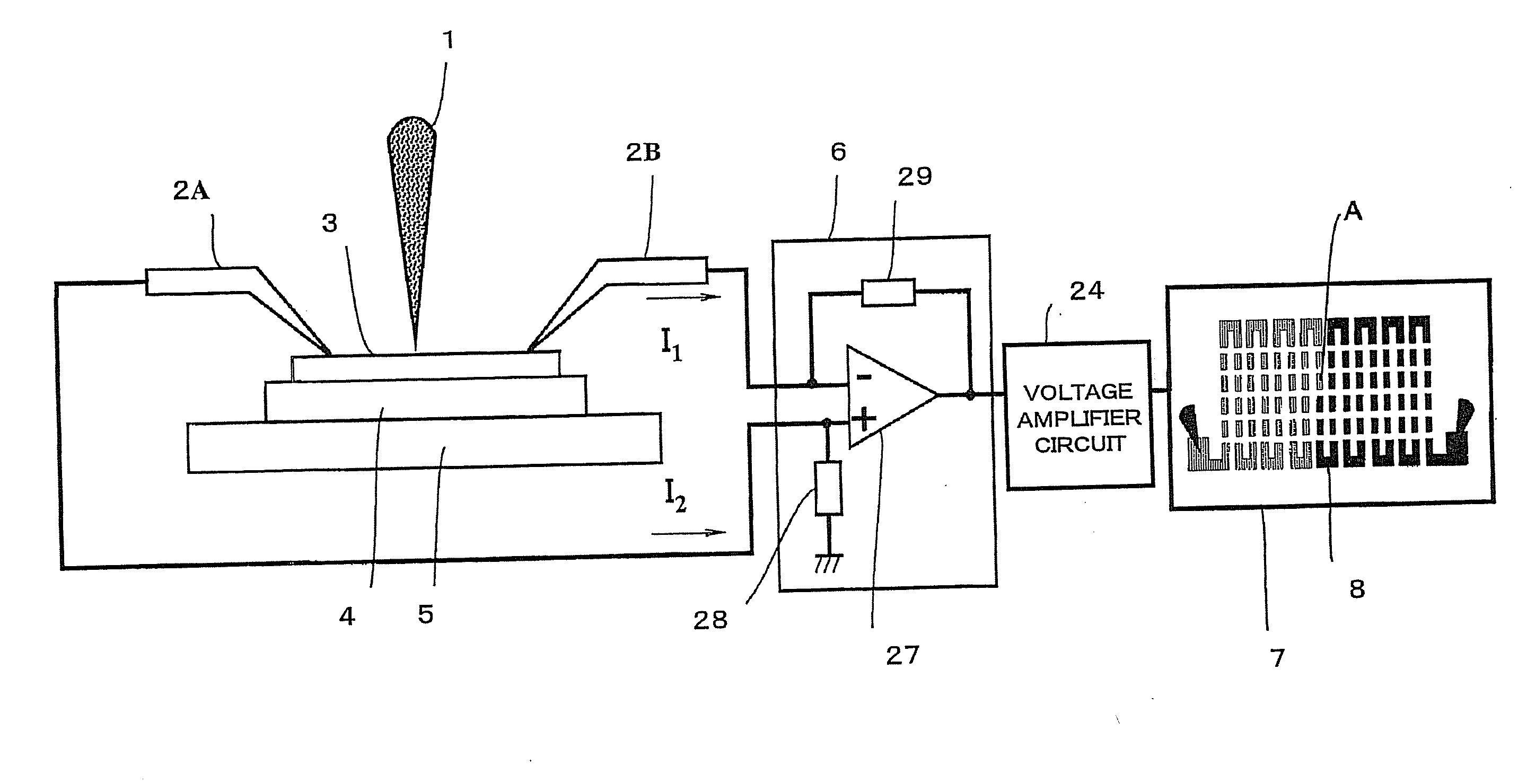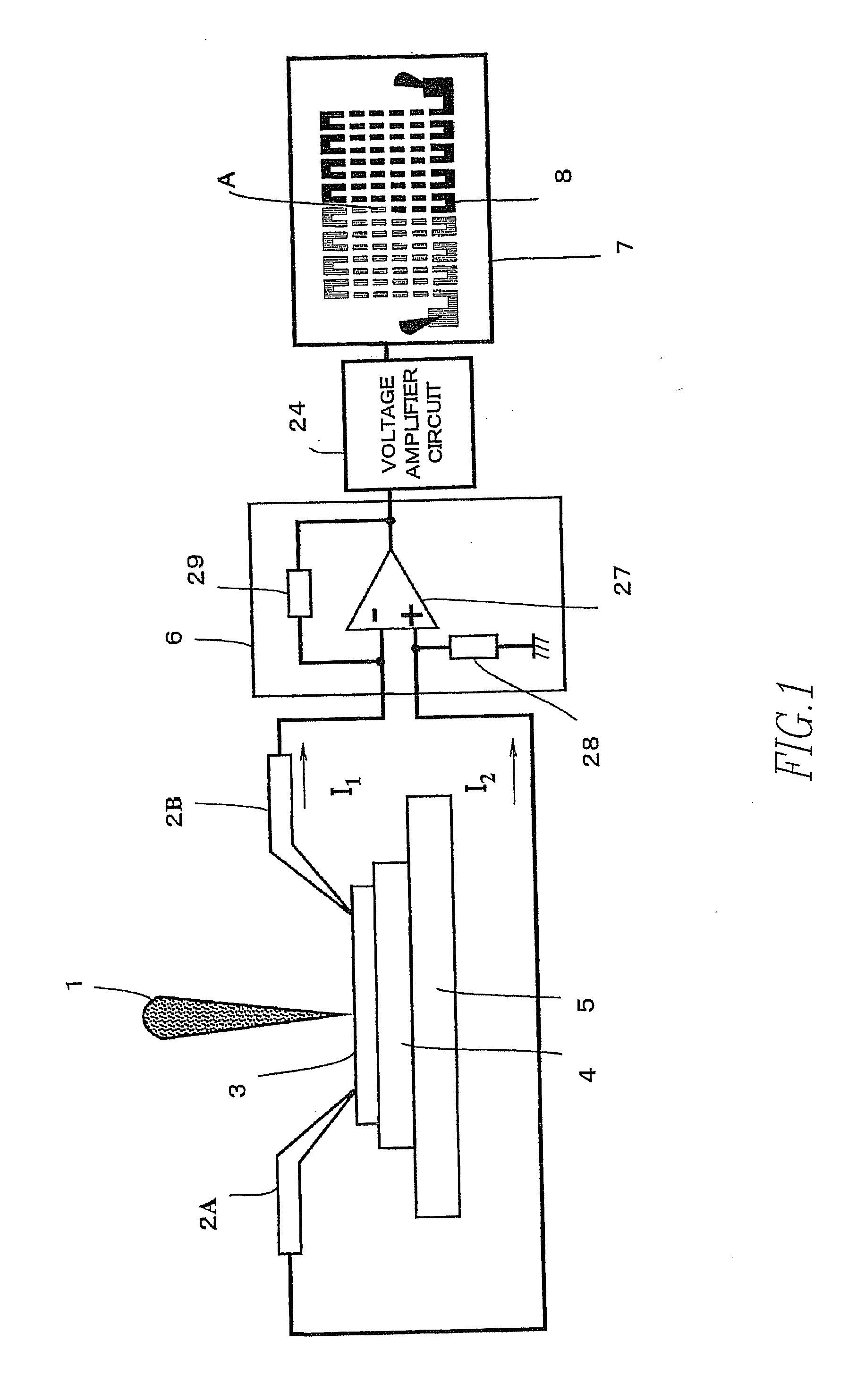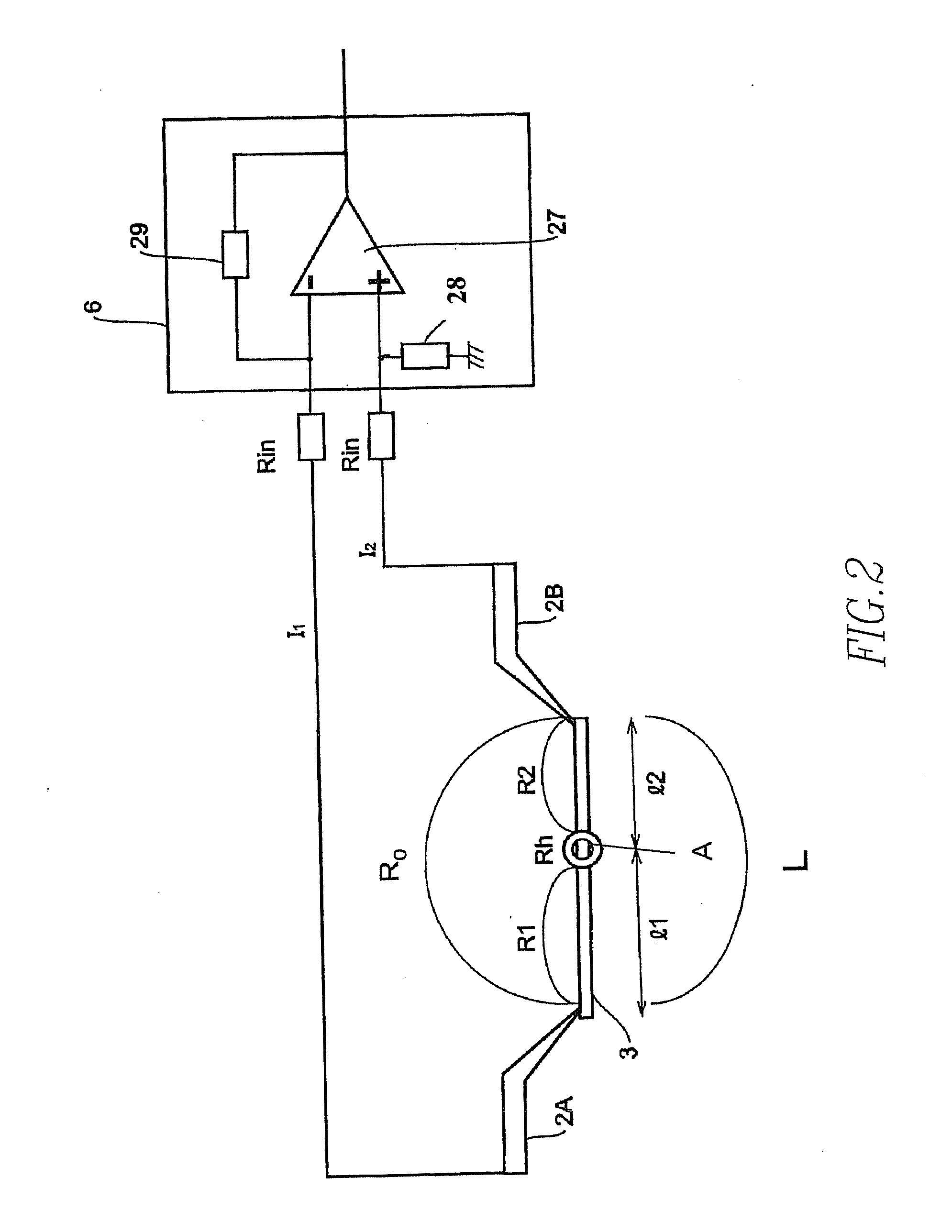Charged-Particle Beam System
a beam system and charge technology, applied in the direction of material analysis using wave/particle radiation, instruments, nuclear engineering, etc., can solve the problems of not being able to directly identify the physical position of a defective portion, unable to obtain the detection output, and becoming difficult to identify the defective portion with the above-described emission microscop
- Summary
- Abstract
- Description
- Claims
- Application Information
AI Technical Summary
Benefits of technology
Problems solved by technology
Method used
Image
Examples
first embodiment
[0023]FIG. 1 is a schematic representation of a charged-particle beam system according to one embodiment of the present invention. Those components of FIG. 1 which are identical with their counterparts of FIG. 7 are indicated by the same reference numerals as in FIG. 7.
[0024]In FIG. 1, probes 2A and 2B are in contact with the opposite ends of an interconnect pattern 3 at their respective one ends, the pattern 3 being formed on a specimen 4. The other ends of the probes 2A and 2B are connected with a differential current-voltage converter 6. The converter 6 is made up of the operational amplifier 27, feedback resistor 29, and another resistor 28. The other end of the probe 2A is connected with the positive input terminal of the operational amplifier 27. The other end of the probe 2B is connected with the negative input terminal of the operational amplifier 27. The resistor 28 is connected between the positive input terminal of the amplifier 27 and ground.
[0025]In the operation of the...
second embodiment
[0050]FIG. 6 is a diagram showing main portions of a charged-particle beam system according to another embodiment of the present invention. Those components of FIG. 6 which are identical with their counterparts of FIG. 1 are indicated by the same reference numerals as in FIG. 1.
[0051]A Fourier transform circuit 20 Fourier transforms the output signal from the differential current-voltage converter 6. A frequency identification means 21 identifies the frequencies of the output signal from the Fourier transform circuit 20. An inverse Fourier transform circuit 22 inverse Fourier transforms the output signal from the frequency identification means 21.
[0052]The operation of the system constructed in this way is described. The probes 2A and 2B are brought into contact with the opposite ends of the interconnect pattern 3 formed on the specimen 4 which, in turn, is placed on the specimen stage 5. Under this condition, the electron beam 1 is scanned over the surface of the specimen 4. An abs...
PUM
| Property | Measurement | Unit |
|---|---|---|
| absorption current | aaaaa | aaaaa |
| absorption current image | aaaaa | aaaaa |
| absorption current | aaaaa | aaaaa |
Abstract
Description
Claims
Application Information
 Login to View More
Login to View More - R&D
- Intellectual Property
- Life Sciences
- Materials
- Tech Scout
- Unparalleled Data Quality
- Higher Quality Content
- 60% Fewer Hallucinations
Browse by: Latest US Patents, China's latest patents, Technical Efficacy Thesaurus, Application Domain, Technology Topic, Popular Technical Reports.
© 2025 PatSnap. All rights reserved.Legal|Privacy policy|Modern Slavery Act Transparency Statement|Sitemap|About US| Contact US: help@patsnap.com



